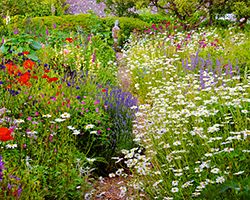Looking for a little gardening inspiration? This year, take your cues from some of the most famous types of gardens in the world: unfussy English cottage gardens; the famously beautiful gardens of Versailles; or the peaceful, Zen-inspired gardens of Japan. Whether you prefer roses or rocks, bright flowers or lush evergreens, striking water features or hidden pathways, there’s a style that will work for your home.
Advertisement
